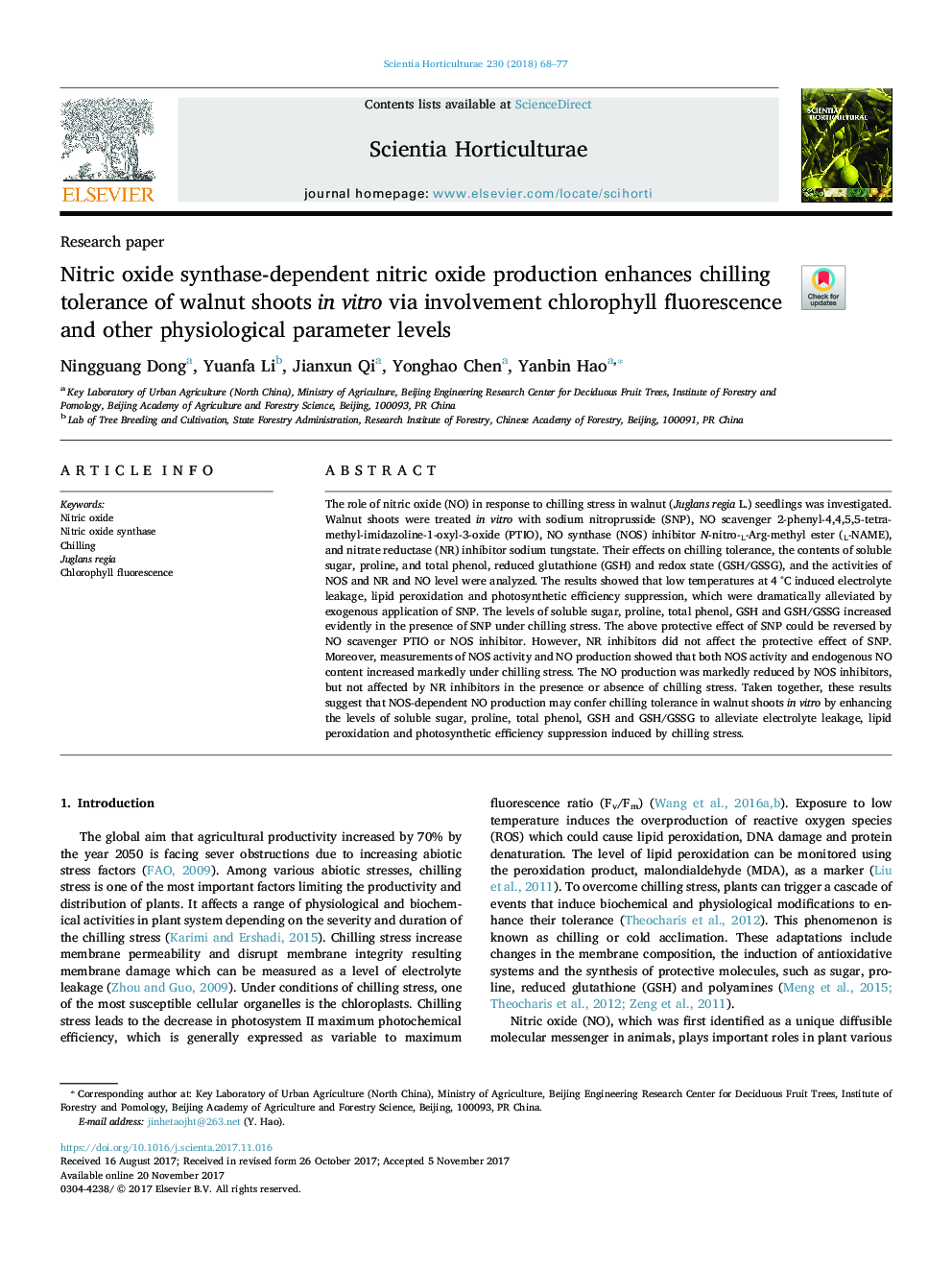| Article ID | Journal | Published Year | Pages | File Type |
|---|---|---|---|---|
| 8893024 | Scientia Horticulturae | 2018 | 10 Pages |
Abstract
The role of nitric oxide (NO) in response to chilling stress in walnut (Juglans regia L.) seedlings was investigated. Walnut shoots were treated in vitro with sodium nitroprusside (SNP), NO scavenger 2-phenyl-4,4,5,5-tetramethyl-imidazoline-1-oxyl-3-oxide (PTIO), NO synthase (NOS) inhibitor N-nitro-L-Arg-methyl ester (L-NAME), and nitrate reductase (NR) inhibitor sodium tungstate. Their effects on chilling tolerance, the contents of soluble sugar, proline, and total phenol, reduced glutathione (GSH) and redox state (GSH/GSSG), and the activities of NOS and NR and NO level were analyzed. The results showed that low temperatures at 4 °C induced electrolyte leakage, lipid peroxidation and photosynthetic efficiency suppression, which were dramatically alleviated by exogenous application of SNP. The levels of soluble sugar, proline, total phenol, GSH and GSH/GSSG increased evidently in the presence of SNP under chilling stress. The above protective effect of SNP could be reversed by NO scavenger PTIO or NOS inhibitor. However, NR inhibitors did not affect the protective effect of SNP. Moreover, measurements of NOS activity and NO production showed that both NOS activity and endogenous NO content increased markedly under chilling stress. The NO production was markedly reduced by NOS inhibitors, but not affected by NR inhibitors in the presence or absence of chilling stress. Taken together, these results suggest that NOS-dependent NO production may confer chilling tolerance in walnut shoots in vitro by enhancing the levels of soluble sugar, proline, total phenol, GSH and GSH/GSSG to alleviate electrolyte leakage, lipid peroxidation and photosynthetic efficiency suppression induced by chilling stress.
Related Topics
Life Sciences
Agricultural and Biological Sciences
Horticulture
Authors
Ningguang Dong, Yuanfa Li, Jianxun Qi, Yonghao Chen, Yanbin Hao,
